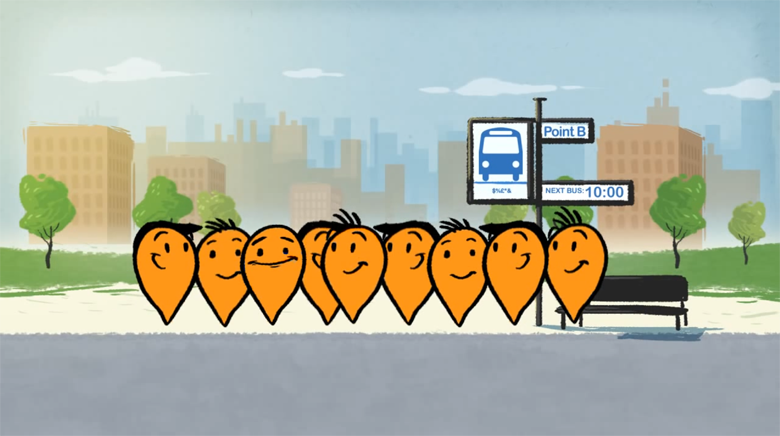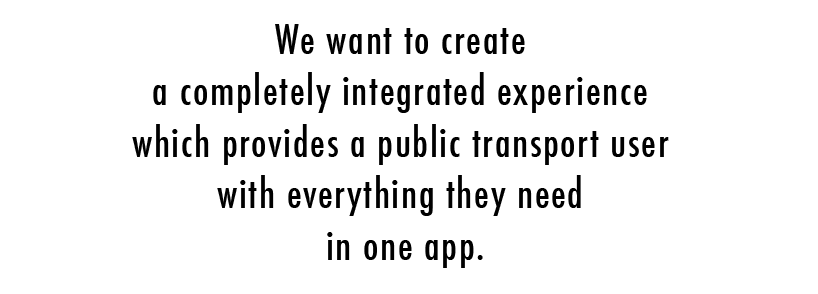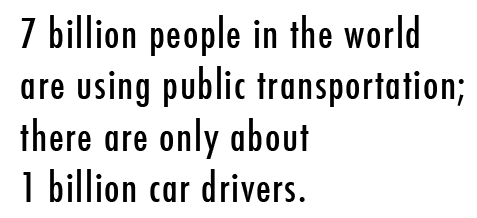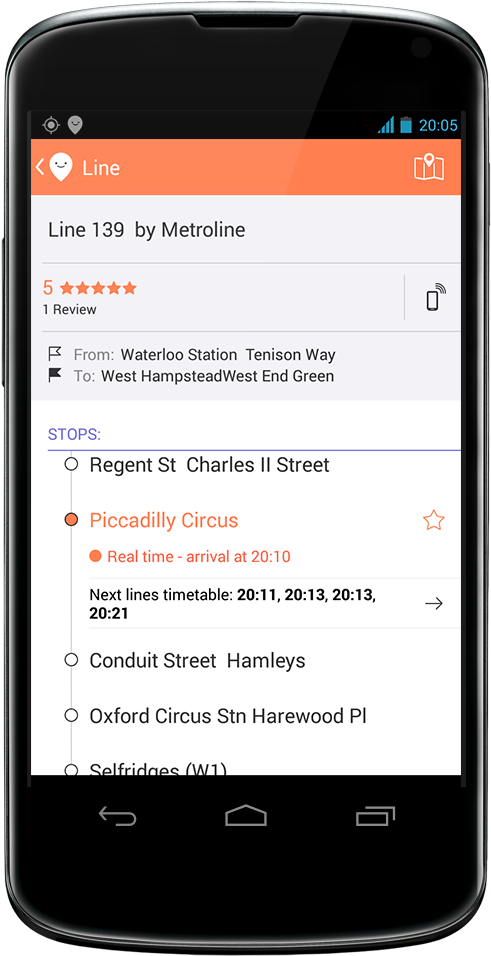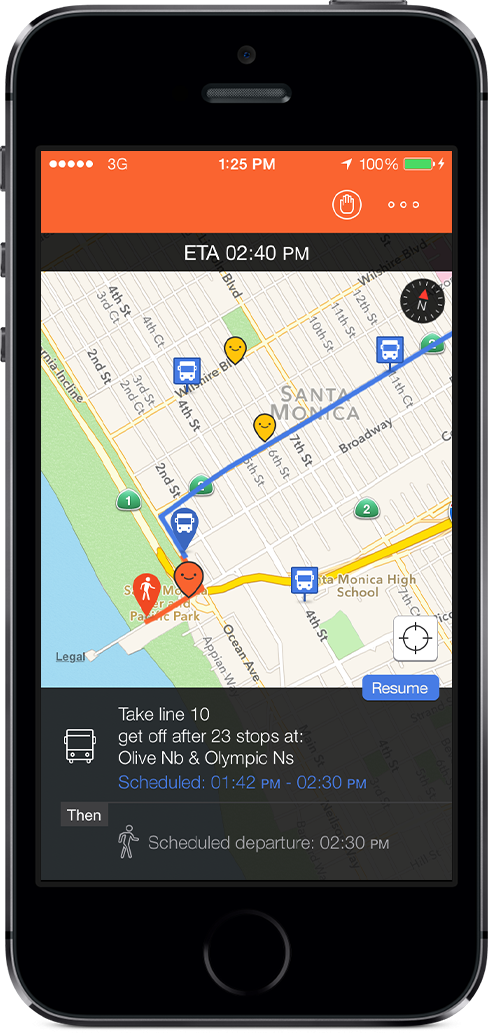Interview by Michael Fisher
Transcription and text by Alex Greenspan
It might be the long wait for a bus in the pouring rain, a crowded train-ride to work, or maybe even the occasional rude driver: if you rely on public transportation to get around, you surely know how frustrating the experience of commuting often is. Moovit, often called “the Waze of public transportation”, is determined to make these experiences a thing of the past. We wanted to know more, so we sat down last week with Moovit’s Product VP Yovav Meydad to talk about the company’s philosophy, its future plans, and the ups and downs of crowdsourcing the morning commute.
•
Pocketnow: Powered by the crowd – that’s a big part of your pitch. Can you take us through what it means?
Yovav (Jay) Meydad: Moovit provides different services to public transportation commuters, such as trip planning, schedules, service alerts, etc. The information is gathered from different sources and the crowd is one of them. Our model gathers the static data from the feeds or websites of transit agencies. We add the real-time information whenever available as well as the data gathered through crowdsourcing. Using Moovit in navigation mode replaces a potential GPS. This way, even if the public transport doesn’t have a GPS installed, the user’s device will actually notify us of the vehicle’s location.
P: And this is all part of the agreement that the user agrees to when he/she downloads the app.
YM: Correct. This is called a passive report, when the user rides with the app open in navigation mode and we look at his location and how he moves. We also have active reports, when users can report the conditions of stations or bus stops, for instance whether they’re crowded or not, and everyone in the area can see those reports. The users also report the conditions of the transport itself. We support seven types of transit vehicles, including bus, train, light rail, even gondola in Rio de Janeiro.
P: Interesting. Boats, ferries and others of that sort too?
YM: Yes, we also support the funicular, a kind of light rail which is being pulled by a cable on the ground, like the cable car in San Francisco for example. A user can send active reports about the conditions of these vehicles: how crowded, clean/dirty, whether the driver is polite, is there air conditioning, Wi-Fi, etc.
P: Say the driver is impolite. How does that information show up on the app, once someone reports it?
YM: Our next version went through a major redesign project. In the previous versions this info appeared in certain places in the app, so you’d check a line or a vehicle and see the conditions. In order to improve this feature, we took it out in the new design and we’re bringing it back with many enhancements. In the upcoming version you’ll be able to see the vehicle coming towards you has some of these conditions turned on by other users. You’ll be able to send a notification that you like a user’s report, to show them someone else has benefited from it. You will also be able to update and correct reports, in case the conditions have changed.
P: Say I report the bus is dirty and an hour later someone cleans it. So, a user can come on and say: “Hey, the bus is clean. Let me update this report”, and the bus shows up as clean on the app.
YM: Correct. This usually happens in terms of how crowded the vehicle is, as the bus may leave a stop empty and after a while it can get very crowded. We have a sophisticated algorithm that looks at the lines in a metro, for example, whether some lines tend to be more crowded than others, etc. So we keep those reports for two or three stops and then we clear them. However, the duration of received reports may be kept for longer periods in cases that didn’t get enough reports in the history of the app. It changes depending on agencies, metros, lines, etc. We’re collecting millions of these reports on a monthly basis, and learn the patterns over time.
Some of the enhancements that will appear in the upcoming version will also show you the historical data of lines in the metro, cleanness scores and so on. Moovit shows not only reports regarding upcoming vehicles, but through the data it collects via the daily reports, it can also tell you if a certain line tends to be crowded in the morning, for instance.
P: This requires a whole lot of people, to function properly, right? I know you’re launching in new cities all the time. Can you share any of the usage numbers worldwide?
YM: Sure. We have over 3.5 million users worldwide. In some of the metro areas we’re talking about hundreds of thousands of users. Keep in mind that the company itself started just a little over two years ago. During the first year we focused on Israel only. We had to prove the model works and that users are actually falling in love with the idea. That was indeed the case, and we only launched outside of Israel in Dec. 2012, 15 months ago. During this short time we’ve now crossed hundreds of metro areas around the world, in 23 countries.
P: When you expand this quickly, you have to deal with a bunch of cities that don’t give you their transit information in the same format. How do you manage that kind of data firehose coming at you?
YM: During the first year, we spent a lot of time building the infrastructure and a big part of it is the ability to connect to different types of data coming in various formats or feeds. Our efforts are actually paying off now, with our ability to expand very quickly to new markets.
P: You’ve had your eye on expansion from the very beginning.
YM: Yes. Often developers prefer to do something just to see that it works, only to realize later they don’t have the proper infrastructure and start over. We actually took a very different approach because we knew it’s a huge market. Billions of users around the world face problems with public transportation, so the ability to plug more and more metros is something we felt was strategic and had to be designed from day one.
P: You mention HopStop in the app description on the Android app store, which is basically the embryonic version of what you’re doing now. Were you there when Apple bought HopStop? How did that affect your direction with Moovit?
YM: Actually, that was more of an app store keyword optimization. After Apple had acquired HopStop, some users were still looking for this app and since Apple removed it from the store, we wanted Moovit to show up. I don’t think the acquisition itself had any impact on us. We planned expansion regardless of the service they offered and in which metros. Their model was very different too. They actually looked to connect to agencies and didn’t use crowdsourcing to enrich their service. That’s the key difference between us and every other company in this field.
Apps in this field often focus on a single market, for example that’s what you typically see if you live in DC; you have a very specific app that serves just the city you live in. And many of these apps don’t provide the same type of features Moovit does. Some of them might offer schedules and trip planning, for example, but won’t offer real-time, which is a key feature for us. We want to create a completely integrated experience which provides a public transport user with everything they need in one app. Our features also include interactive navigation, knowing the conditions of the vehicle that you’re about to board, service/advisory alerts, and of course, mobile ticketing.
P: So do you see yourself providing ticketing services for agencies going forward?
YM: This is a feature in the app that is live already. We have a pilot with a few agencies here in Israel, a commercial offering in Poland, and we’re working on expanding it to more places. The idea is that when you’re checking the app for the schedule of an upcoming transport, we immediately offer you to purchase a ticket directly from the app. So you don’t have to carry cash or preload your smartcard. You just show the phone to the conductor. Of course every city has a different way to inspect tickets and we support the variety of methods. This is definitely a part of our offering.
P: That would be impressive. Speaking of individual cities, the app that I currently use is a local app which doesn’t offer any of the crowdsourcing stuff. It did something smart, however, when it started covering the bicycle-renting service my city began to offer. Since you already cover seven different types of transportation, do you see a possibility of adding that in the future?
YM: Yes, definitely. We’ve had this on our road map for quite a while. Users in many of the metros which offer bike-sharing services request this feature. API’s are available to know the locations of these services and their availability, and so in one of the upcoming versions we’ll offer that too.
P: You’ve mentioned earlier that Moovit’s most essential feature is the fact it’s powered by the crowd. How do you encourage people to report the different situations they encounter?
YM: While you’re in a public transport the app will detect when the vehicle is no longer moving and will pop-up a question, like: “how crowded is this bus?” It’s very contextual, because we need to see where you are, as only the people on the bus are qualified to receive these questions. Same goes for station crowdedness. Only people standing in the proximity of the station can actually report its conditions. We use the user’s location, whether they are on a moving vehicle, and so on, in order to provide the reports.
P: So in a way it’s similar to Waze, where a user gets pop-ups with requests to report certain situations or confirm the reports of others. It relies on the goodwill of the users.
YM: Exactly, it’s a very good analogy. It works in exactly the same way.
P: It seems like every time something like Moovit gets this big, it then gets bought by a bigger company like Google or Apple. Is that something you’re planning for? Or do you prefer to stay an independent company?
YM: Right now our main focus is to help public transportation commuters around the world. We don’t really think about the potential of being acquired. 7 billion people in the world are using public transportation; there are only about 1 billion car drivers. A ratio of 1:7 between the people who are Waze-served for instance, and the potential market we can reach. People annually spend hundreds of billions of dollars on public transportation. Not to mention the enormous amount of time they’re wasting waiting for and riding the vehicles. We can make this process more efficient and help people spend less time waiting in the station, as we alert them a few minutes before their bus is about to arrive. It can also save people a lot of money. That’s what our primary focus is. We are determined to continue and improve our service, expand our market and see how we can capitalize on the huge opportunity to also offer mobile ticketing to our users.
P: Moovit is currently on iOS and on Android. Are there any plans for Windows phone?
YM: Absolutely, we’re already working on a Windows phone version. At this time I’m not sure how quickly we’ll release it, but it’s likely we’ll be able to launch it somewhere around mid-2014, before the end of Q2. It’s not a platform we can afford to ignore anymore, especially in certain markets where Moovit is popular, like Brazil, Italy, Poland, etc. We’re working hard to bring the Windows version to these and other markets.
P: Moovit is not just the name of the app; it’s also the name of the company. Does the company plan any more titles or is all the work being focused on the flagship app? What can we expect from Moovit in the future?
YM: We’re not planning on offering a different app. We’re going to expand to more platforms but it’s still going to be a single product. We also have a web-product. On our site you can find a trip-planner, a schedule-checker and alerts. Everything the user needs while planning a trip can be done on the web. We also have partnerships with big agencies that would like to offer additional services to their users. They have our trip planner embedded on their websites as a widget or a search-box.
P: They’re adding value to their site and then it’s a win-win.
YM: Exactly, it’s in a local market, so if the largest agency in Italy adds this, Napoli for instance, they will only have their own line numbers displayed in different trip-routes and time tables. This is another offering that we’re rolling out to more and more agencies. It’s a consumer product which is completely web-based.
P: The Asian mobile market is expanding very quickly; do you have any plans for it?
YM: We now have coverage in nearly 100 different metro areas. Next week we’re going to be the largest company that covers the largest number of metros in the US. More than 50 different metros are currently supported and we’ll add 10-12 more next week. In Asia, we already provide services in the Philippines, Malaysia in Kuala Lampur, and we’re planning to add more metros in the coming months. We’re also looking into China and India. However, it’s a matter of availability of some of the data, the ability to get into a market and get some traction very quickly. It’s a challenge that will require us to defocus away from what we’re doing now. There are currently very big metropolitan areas where we don’t provide service yet. So although we prefer to first deal with areas that are easy and available, I’m sure we’ll get there too.
I’d also like to mention that we’re translating the app into more languages with the help of our community of users. Very soon we’ll support Arabic, Swedish and Hungarian and all of this is coming from volunteers. It’s great to have such a warm and caring community, we’re grateful for their support as this really helps us to make the product better.

